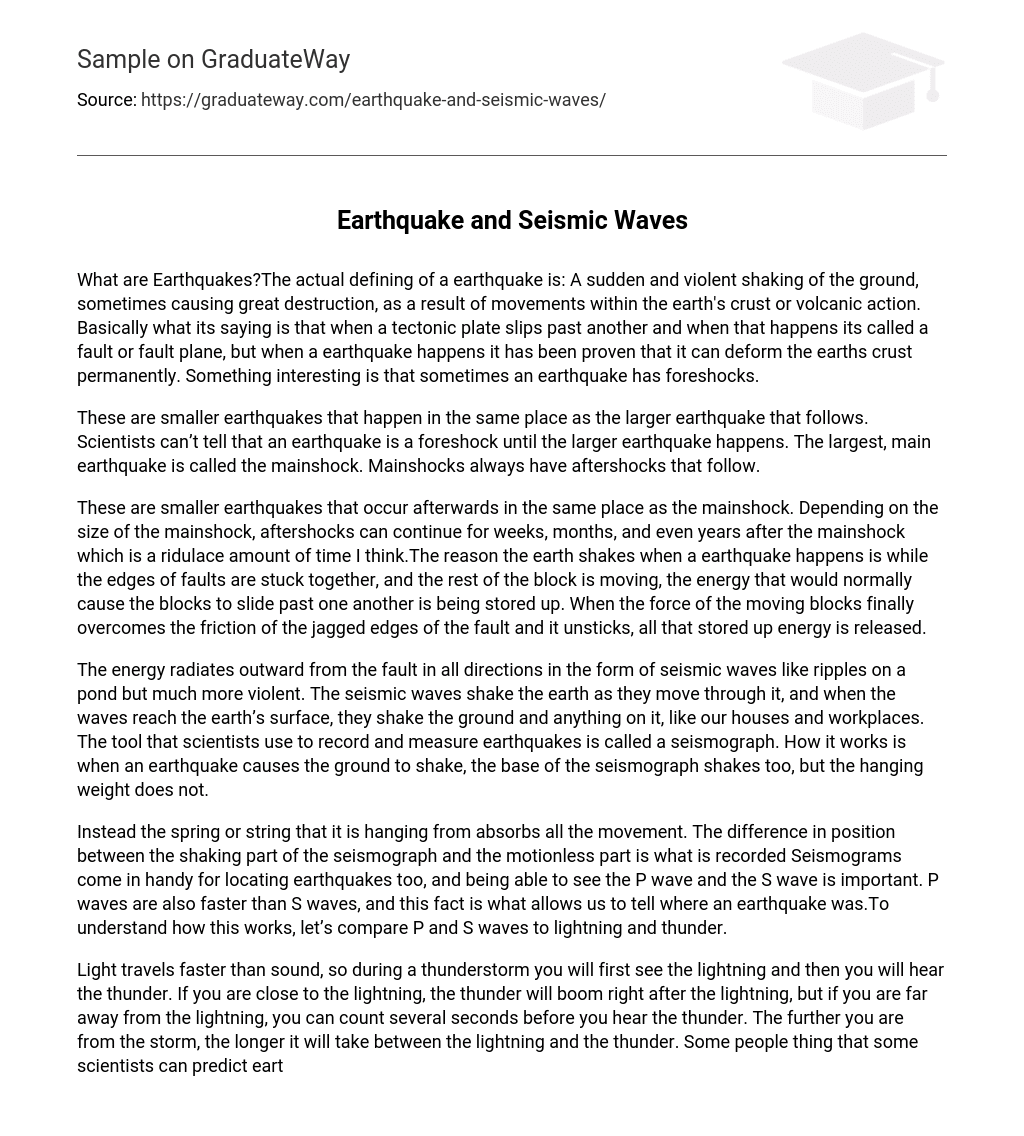What are Earthquakes?The actual defining of a earthquake is: A sudden and violent shaking of the ground, sometimes causing great destruction, as a result of movements within the earth’s crust or volcanic action. Basically what its saying is that when a tectonic plate slips past another and when that happens its called a fault or fault plane, but when a earthquake happens it has been proven that it can deform the earths crust permanently. Something interesting is that sometimes an earthquake has foreshocks.
These are smaller earthquakes that happen in the same place as the larger earthquake that follows. Scientists can’t tell that an earthquake is a foreshock until the larger earthquake happens. The largest, main earthquake is called the mainshock. Mainshocks always have aftershocks that follow.
These are smaller earthquakes that occur afterwards in the same place as the mainshock. Depending on the size of the mainshock, aftershocks can continue for weeks, months, and even years after the mainshock which is a ridulace amount of time I think.The reason the earth shakes when a earthquake happens is while the edges of faults are stuck together, and the rest of the block is moving, the energy that would normally cause the blocks to slide past one another is being stored up. When the force of the moving blocks finally overcomes the friction of the jagged edges of the fault and it unsticks, all that stored up energy is released.
The energy radiates outward from the fault in all directions in the form of seismic waves like ripples on a pond but much more violent. The seismic waves shake the earth as they move through it, and when the waves reach the earth’s surface, they shake the ground and anything on it, like our houses and workplaces. The tool that scientists use to record and measure earthquakes is called a seismograph. How it works is when an earthquake causes the ground to shake, the base of the seismograph shakes too, but the hanging weight does not.
Instead the spring or string that it is hanging from absorbs all the movement. The difference in position between the shaking part of the seismograph and the motionless part is what is recorded Seismograms come in handy for locating earthquakes too, and being able to see the P wave and the S wave is important. P waves are also faster than S waves, and this fact is what allows us to tell where an earthquake was.To understand how this works, let’s compare P and S waves to lightning and thunder.
Light travels faster than sound, so during a thunderstorm you will first see the lightning and then you will hear the thunder. If you are close to the lightning, the thunder will boom right after the lightning, but if you are far away from the lightning, you can count several seconds before you hear the thunder. The further you are from the storm, the longer it will take between the lightning and the thunder. Some people thing that some scientists can predict earthquakes but no, and it is unlikely they will ever be able to predict them.
Scientists have tried many different ways of predicting earthquakes, but none have been successful. On any particular fault, scientists know there will be another earthquake sometime in the future, but they have no way of telling when it will happen. Unlike any other natural disasters the earthquake is spontaneous and unpredictable and more than likely will never be able to be predictable like I said before, so in all in all be prepared for a earthquake.





